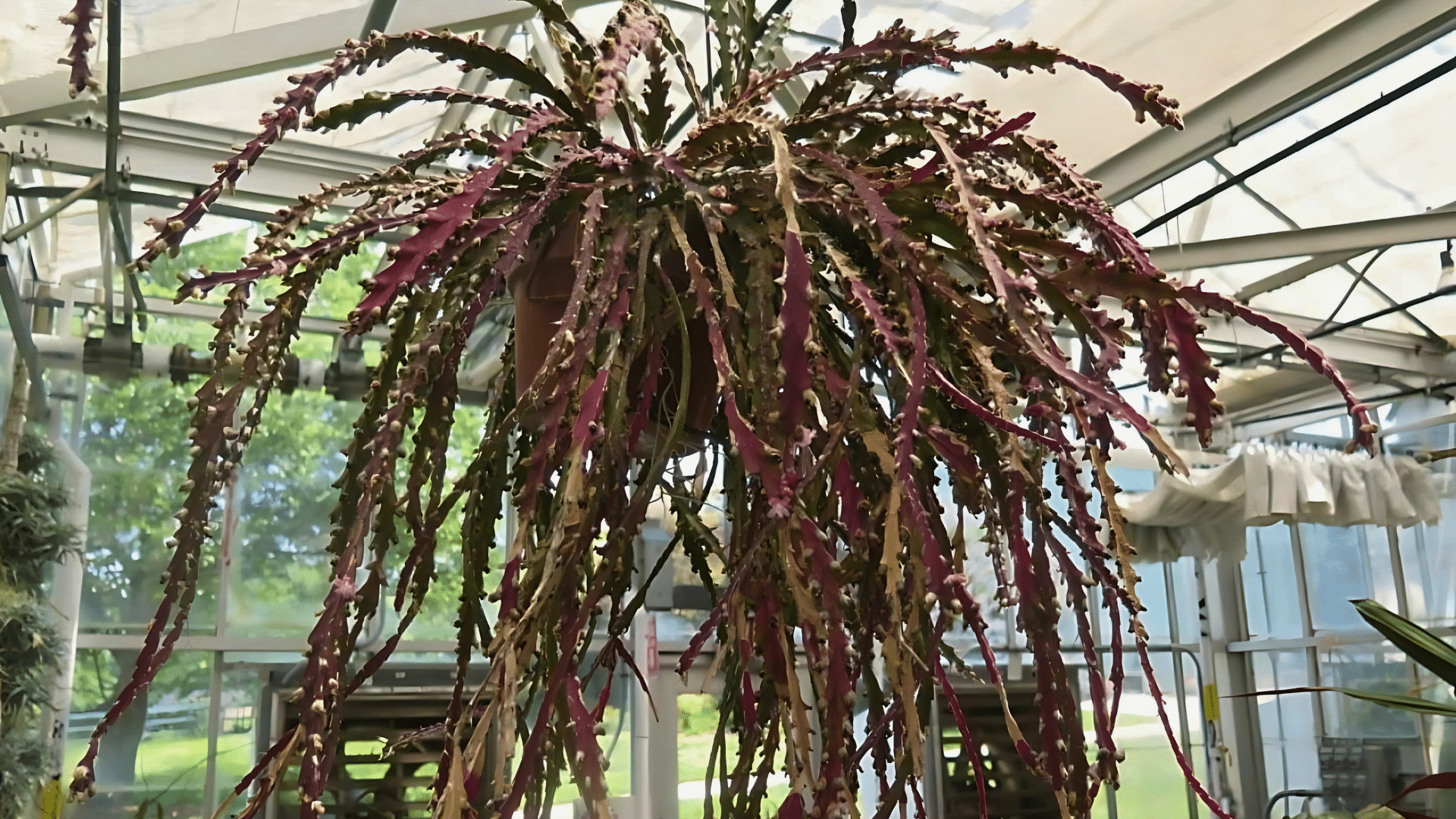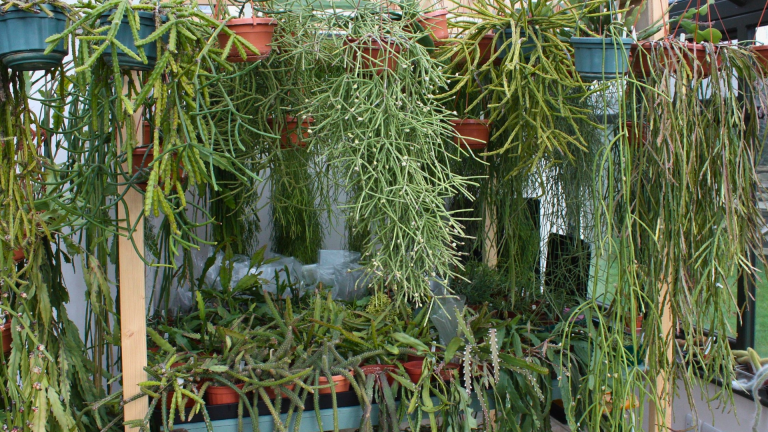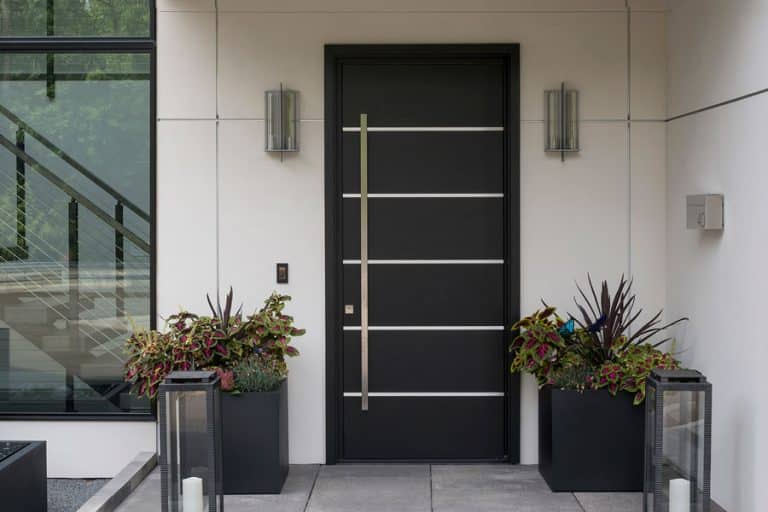Looking for a cactus that doesn’t follow the rules? Let me introduce you to the Lepismium cruciforme, also called the Hurricane Cactus.
This little rebel hails from the rainforests of Brazil and prefers hanging from trees instead of baking in the desert, unlike most cacti. It’s a fun plant to love, but caring for it takes a little know-how.
In this guide, I’ll show you how to keep your plant healthy, what to do if something seems off, and how you can grow new ones from simple cuttings.
If you’ve been looking for a plant with real personality—something that stands out and feels special—this is a great one to have. Let’s make sure yours stays happy, strong, and growing well.
Plant Profile: Hurricane Cactus
Before we get into care tips, let’s learn what makes this plant special:
- Common names: Hurricane Cactus, Chain Cactus
- Scientific name: Lepismium cruciforme
- Family: Cactaceae (cactus family)
- Native habitat: Rainforests of Brazil, Argentina, Paraguay, and Bolivia
- Growth habit: Epiphytic (grows on trees rather than on the ground)
- Toxicity: Non-toxic to pets and humans
How does the Hurricane Cactus Stands Out?
This isn’t your typical prickly desert plant. The Hurricane Cactus grows long, chain-like stems that can reach up to 6 feet when mature.
The stems may be flat, triangular, or square in cross-section, giving them an interesting geometric look. New growth often shows red or purple tips, which can signal healthy development.
When exposed to bright light, the entire plant may take on a reddish-purple tint. But the real show happens when it blooms.
The Hurricane Cactus produces small, star-shaped pink or white flowers along its stems, usually in spring. After flowering, red berry-like fruits may appear, adding another pop of color.
Caring for the Hurricane Cactus

Caring for this cactus takes a different approach than typical desert plants you might be used to.
It needs consistent attention to temperature, watering, and light to stay healthy in indoor settings.
Instead of dry soil and full sun, it prefers cooler spots and more frequent moisture checks.
Understanding these needs will help the plant stay strong and avoid common problems seen in homes.
Finding the Perfect Light Balance
Your Hurricane Cactus wants bright but filtered light. It evolved growing under the rainforest canopy, where direct sunlight is rare.
- Indoors: Place near an east or north-facing window for gentle morning light.
- Outdoors: Keep in partial shade, especially during hot afternoons.
- Warning signs: Red or brown patches may indicate too much direct sun.
A good rule: if you can see a distinct shadow cast by your hand, the light might be too strong for too long each day.
Water Requirement
Unlike desert cacti, Lepismium cruciforme needs regular moisture. Its rainforest origins mean it’s not built for drought.
- Water when the top 1-2 inches of soil feels dry to the touch
- Provide less water in winter when growth slows
- Use room-temperature water to avoid shocking the roots
- Always ensure that excess water can drain away
During the hot summer months, you might need to water weekly. In winter, once every 2-3 weeks may be enough.
Soil & Pot Selection for Success
The right growing medium makes all the difference for epiphytic plants like the Hurricane Cactus.
Ideal soil mix:
- 50% orchid bark or cactus soil
- 25% perlite or pumice
- 25% peat moss or coco coir
This mix simulates the plant’s natural habitat – organic matter with excellent drainage.
Best pots:
- Choose containers with drainage holes
- Hanging baskets work well for showing off trailing stems
- Clay or terracotta pots help excess moisture evaporate
Temperature & Humidity Needs
Your Hurricane Cactus appreciates warm, humid conditions, similar to its Brazilian rainforest home.
- Temperature: Comfortable between 60-80°F (15-27°C)
- Minimum: Can handle brief drops to 40°F (4°C)
- Humidity: Thrives in 50-70% humidity
If your home is dry, especially in winter with heating systems running, consider using a humidifier nearby or placing the pot on a tray with pebbles and water.
Feeding Your Hurricane Cactus
Feeding your Hurricane Cactus is simple and helps it stay healthy during active growth.
Use a balanced liquid fertilizer at half-strength once a month in spring and summer.
Don’t feed it in fall or winter, when the plant naturally slows down. Every few months, rinse the soil with water to clear out built-up salts.
Understanding Growth Patterns
The Hurricane Cactus has an interesting growth cycle that differs from many common houseplants. Because it comes from the Southern Hemisphere, its active growing season runs from fall to spring.
New stems typically emerge from the ends of existing growth. You’ll notice small, reddish nubs that gradually extend into full stems with their characteristic geometric shape.
During active growth, stems can extend by several inches per month in ideal conditions.
Propagation Process
Propagation is simple with the Hurricane Cactus, especially when using stem cuttings from healthy plants. Cut a piece, and let it dry for a few days before placing it in well-draining soil.
Keep the soil slightly damp until roots form, usually within a couple of weeks. This method works well and gives you more plants without much effort.
Hurricane Cactus Common Issues
Even healthy Hurricane Cactus plants can face a few problems from time to time.
Common issues include root rot from overwatering, sunburn from too much direct light, and pest attacks like mealybugs or spider mites.
Watch for signs like yellowing, mushy stems, or webbing on the plant. Acting quickly helps prevent damage and keeps your plant growing strong.
Even with good care, things can sometimes go wrong. Here are some signs to watch for that may mean your plant needs a little extra help.
- Soft, mushy stems: Often indicates overwatering or poor drainage
- Shriveled, wrinkled stems: Usually means the plant needs more water
- Pale, washed-out color: May signal too much direct sunlight
- Slow or no growth: Could be insufficient light or nutrients
- White cottony spots: Likely mealybugs, a common pest
Pest Management
Even though the Hurricane Cactus is pretty tough, it can still get pests like mealybugs, scale, or spider mites. These bugs can hide on the stems or under the leaves.
If you see sticky spots, white fuzz, or tiny webs, it’s time to act. Use insecticidal soap or neem oil once a week, and keep checking until the pests are completely gone. Always spray in a well-ventilated area.
Decorating Your Hurricane Cactus
This plant’s trailing growth works well in rooms with shelves, hooks, or wall planters.
It brings a soft, natural feel that complements modern and casual spaces alike.
The stems fall gently over edges, helping break up hard lines and corners. When sunlight hits from the side, it casts bold, geometric shapes that shift throughout the day.
You can use it in smaller rooms to add interest without crowding surfaces. The plant also pairs well with others that have softer or rounder leaves, creating a nice mix of textures.
Simple ways to show it off:
- Hang it in a macramé holder by an east- or west-facing window for filtered sunlight
- Let it trail from a high bookshelf, cabinet, or plant stand
- Group it with forest cacti like Christmas cacti for a matching plant set
- Add it to a vertical garden wall to bring movement without taking up floor space
- Place it on a shower shelf or bathroom ledge if there’s enough natural light
Ways to Buy Hurricane Cactus
The Hurricane Cactus isn’t found in every store, but interest is steadily growing among plant lovers. You might need to check a few different places before you find a healthy one.
Always choose a plant with firm, green stems and no soft spots or visible pests. Healthy roots and fresh growth are also good signs.
Try these sources when shopping for one:
- Specialty nurseries that focus on rare or unusual plants
- Online plant shops with cactus or succulent sections
- Local plant swaps or garden club events in your area
- Social media groups where members trade or sell cuttings
Final Thoughts
Now you know exactly what your Hurricane Cactus needs to stay healthy and thrive. From where to get one to how to care for it day by day, you’ve got the basics covered.
This isn’t just another houseplant—it’s one with character. It doesn’t need much, but it gives a lot in return. It fits into your space, your routine, and your life without making a fuss.
Watching it grow can be surprisingly rewarding. You might not expect it, but this could become one of your favorite plants.
So why not bring one home? Start simple, care for it your way, and enjoy the calm it adds to your space.
Frequently Asked Questions
Why Isn’t My Hurricane Cactus Flowering?
It needs a cool rest period around 50–60°F for a few weeks during winter to trigger blooms. Also, only mature plants—usually over 3 years old—tend to flower regularly.
Can I Place My Hurricane Cactus Outdoors?
Yes, place it outside during warm months when the nights stay above 50°F. Use filtered light, and keep it safe from heavy rain, strong wind, or direct midday sun to avoid stress.
How Often Should I Repot My Plant?
Repot every 2–3 years or when roots fill the pot. These plants are fine being a bit root-bound, but fresh soil can boost growth and help with drainage.













